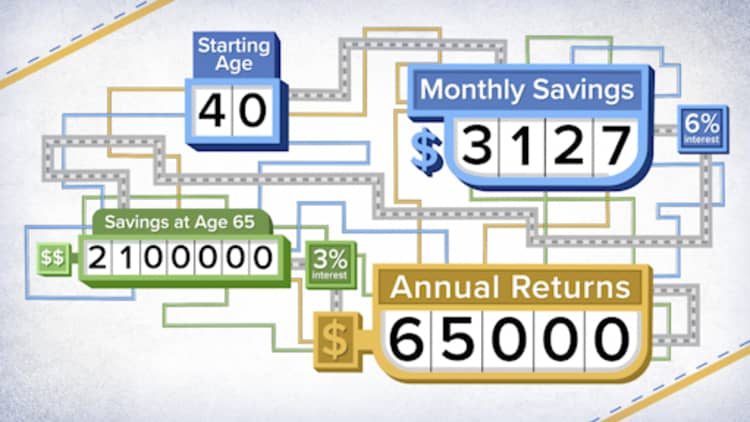Morsa Images | E+ | Getty Images
If you’re on track to max out your 401(k) plan for 2023 and want to save more, your plan may have another option: after-tax contributions.
For 2023, you can defer up to $22,500 into your 401(k), and savers age 50 and older can add another $7,500. Some plans allow even more through after-tax 401(k) contributions.
Keep in mind, the total plan limit for 2023 is $66,000, which includes your deferrals, the company match, profit sharing and other deposits from your employer.
More from Personal Finance:
Here’s how to capture higher Treasury yields with a T-bill ladder
Who profits from the $10 billion egg industry
Student loan borrowers camp out at Supreme Court, praise Biden forgiveness plan
An estimated 14% of employees maxed out 401(k) plans in 2021, according to Vanguard, based on 1,700 plans and nearly 5 million participants.
After-tax 401(k) contributions may be worth considering if you’re a higher earner looking for more ways to save, explained Ashton Lawrence, a certified financial planner and partner at Goldfinch Wealth Management in Greenville, South Carolina.
The difference between after-tax and Roth accounts
After-tax 401(k) contributions are different than Roth 401(k) savings. While both involve deferring part of your paycheck after taxes, there are some key differences.
For 2023, if you’re under 50, you can defer up to $22,500 of your salary into your plan’s regular pretax or Roth 401(k) account. The percentage of plans offering a Roth 401(k) saving option has surged over the past decade.

However, some plans offer additional after-tax contributions to your traditional 401(k), which allows you to save more than the $22,500 cap. For example, if you defer $22,500 and your employer kicks in $8,000 for matches and profit-sharing, you may save another $35,500 before hitting the $66,000 plan limit for 2023.
While the number of plans offering after-tax 401(k) contributions has been rising, it’s still less common among smaller companies, according to an annual survey from the Plan Sponsor Council of America.
In 2021, roughly 21% of company plans offered after-tax 401(k) contributions, compared to about 20% of plans in 2020, the survey found. And almost 42% of employers of 5,000 or more provided the option in 2021, up from about 38% in 2020.
Despite the uptick, after-tax 401(k) participation declined in 2021, dropping to about 10% from nearly 13% the previous year, the same survey showed.
Consider the ‘mega backdoor Roth’ strategy
Once you’ve made after-tax contributions, the plan may allow what’s known as a “mega backdoor Roth” strategy, which includes paying levies on growth and moving the funds for future tax-free growth.
“It’s a nice way to go ahead and start boosting that tax-free money for those future years,” said Lawrence.
Depending on the plan rules, you may transfer the money to a Roth 401(k) within the plan or to a separate Roth individual retirement account, explained Dan Galli, a CFP and owner at Daniel J. Galli & Associates in Norwell, Massachusetts. And with many details to consider, working with an advisor may be worthwhile.
However, “there’s a fair number of professionals — from CPAs, attorneys, wealth managers and financial planners — who don’t understand or are not familiar with in-plan Roth [401(k)] rollovers,” he said.
There’s a fair number of professionals — from CPAs, attorneys, wealth managers and financial planners — who don’t understand or are not familiar with in-plan Roth [401(k)] rollovers.
Dan Galli
Owner at Daniel J. Galli & Associates
While the “knee-jerk reaction” is to roll after-tax 401(k) funds out of the plan into a Roth IRA, investors need to know the rules and possible downsides, such as losing access to institutional pricing and funds, Galli said.
“There’s no right or wrong,” he said. “It’s just understanding the advantages, and my impression is most people don’t understand that you can do this all within the 401(k).”
 EU News Digest Latest News & Updates
EU News Digest Latest News & Updates



